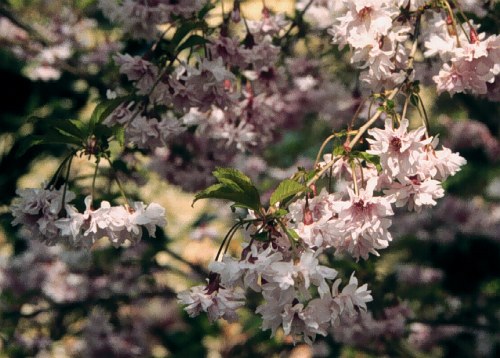Prunus x incam
Okame Flowering Cherry
Rosaceae
ExpandHabitat
- hybrid between P. incisa and P. campanulata
- hardy to zone 7, and warmer parts of 6
Habit and Form
- a small, deciduous tree
- 15' to 25' tall
- up to 20' wide
- upright, rounded crown
- medium texture
- moderate growth rate
Summer Foliage
- alternate leaf arrangement
- simple, deciduous leaves
- oval leaf shape
- 1" long to 2.5"
- dark green leaf color
Autumn Foliage
- copper, orange, yellow fall color
Flowers
- pink, single flowers with red flower parts
- flowers in spring
- showy
Fruit
- not commonly seen
- not ornamentally important
Bark
- showy
- reddish-bronze bark
- prominent horizontal lenticels
Culture
- full sun to part shade
- soil tolerant
- moderately drought tolerant
Landscape Use
- specimen
- container planting
- buffer strip
- for flowering effect
- patio plant
Liabilities
- canker worm
ID Features
- small, deciduous tree
- alternate leaf arrangement
- oval leaf shape
- pink flowers with red flower parts
Propagation
- cuttings
Cultivars/Varieties
'Okame' - This award-winning plant -- a hybrid of P. incisa and P. campanulata (thus, the hybrid name "incamp") -- forms a broad-columnar tree that rounds out with age (to 30' tall). It bears deep pink blooms in early spring before the leaves. In addition, it can express handsome fall color and shows attractive red-brown bark. This plant appear better adapted to USDA zone 6+ planting situations than other cherries.
'Dream Catcher' - A U.S. National Arboretum introduction, this seedling of 'Okame' is insect-resistant and shows pink flowers a bit later than its parent. The dark green leaves develop good fall color.

